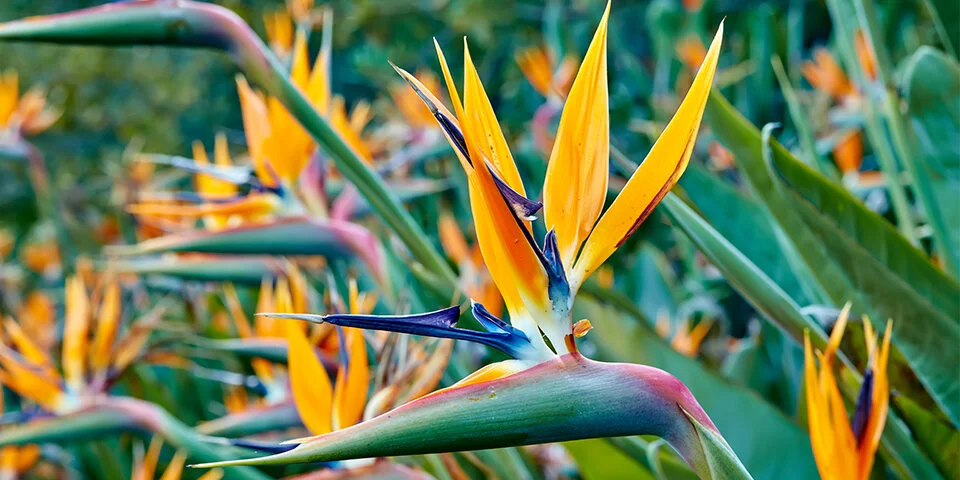For the serious hobbyist it’s more satisfactory to grow vegetables from seeds, rather than buying plants from the nursery. You will get a much greater choice of varieties and you will be able to set them out when they are in optimal condition for transplanting. Buying a six-pack of cauliflower seedlings is likely to give you a bunch of root bound plants that will all mature at the same time. You’ll need to give most of them away, discard a few plants or face a glut of cauliflower which is in the best condition to harvest for only a few days and will go off within two or three days of cutting. Most vegetables keep better than cauliflower but they’re all at their best within 24 hours of harvesting. With seeds you can make multiple plantings tailored to your probable rate of use.
I always wait until the new year has dawned to do my ordering of seeds for the next season’s planting. Perhaps it’s just paranoia on my part, but I am never sure that I’m not getting last year’s seed when I order after the summer, especially when those autumn discount sales appear in my inbox.
Over the years, I’ve scattered through these articles' recommendations for specific varieties when writing about individual vegetables, but I thought that it would be useful to bring this information to one place for the interested reader. There are scores, and sometimes hundreds, of varieties available when you go through the catalogues and I have no doubt that many are as good as, or better than, those that I mention here. After all, we have a small hobbyist’s garden, not an experimental farm. However, I can say that those I recommend have done well for us during multiple seasons during more than half a century of edible gardening a few hundred yards from the Pacific.
Beet ‘Kestrel’. More widely available varieties like ‘Red Ace’ are fine but ‘Kestrel’ has proven especially reliable.
Broccoli ‘Packman’. This is an early maturing variety with a nice main head and side shoots that will keep you supplied for many months. We have plants over a year old that we keep mainly in the hope of appeasing the rabbits, but they still supply us with enough shoots to be useful.
Carrot. We’ve grown many of the standard orange carrots and none stands out enough to be recommended. Carrots grow well but in our climate don’t develop the good flavour one expects from the home garden. I can recommend Kyoto Red but it won’t do well unless it is planted in September or October.
Cauliflower ‘Snow Crown’. Early maturing and reliable. Set out two plants every three to four weeks, depending on how much you like this vegetable.
Cabbage ‘Red Dynasty’. Excellent quality and keeps well with storage. The heads are tight enough to resist invasion by slugs and caterpillars, unlike most early green cabbages.
Kohlrabi ‘Conan’. Very reliable and can grow to tennis ball size without getting woody.
Radish ‘Cherriette’. Quick maturing and keeps longer in the ground without getting pithy, compared with some like ‘French Breakfast’.
Rutabaga ‘Laurentian’. Better tasting than the more widely available ‘American Purple Top’.
Pole bean ‘Fortex’. Tops for flavour, though not as vigorous as ‘Blue Lake’, also a good choice.
Bush bean. There’s no clear winner but ‘Contender’ is reliable. ‘Nickel’ is a good French filet, but like all filets, it gets tough quickly if not harvested when first ready.
Fava bean ‘Robin Hood’. Low growing and very productive.
English pea ‘PLS 560’. Tasty and disease resistant. Give it support though web authors say it’s not necessary.
Snap pea ‘Cascadia’. Low growing but also needs support.
Cucumber ‘Sweet Success’. Far surpasses others we have grown for reliability and fruit quality.
Okra ‘Jambalaya’. Reliable and tasty in our hands. It does turn tough if allowed to get longer than about 4 inches and so needs regular cutting.
Tomato ‘Celebrity’. Not as disease resistant as several varieties I’ve discussed recently, but tops for fruit quality and winter cold tolerance.
Winter squash ‘Bonbon F1’. Doesn’t store as well as butternut squash but unmatched for fruit quality. Burgess buttercup is similar and open-pollinated so the seeds can be saved.
You’ll note plenty of omissions from this list. Some, like parsnips, celery and Brussels sprouts, don’t do well or develop good table quality in our climate. Some, like salsify, celery root and witloof, aren’t, in my opinion, worth the considerable effort it takes to grow them. And then, there is summer squash. Yes, it tastes OK if you dose it with enough salsa, but not good enough to warrant giving it the amount of garden space it requires.
Arthur Dawson
